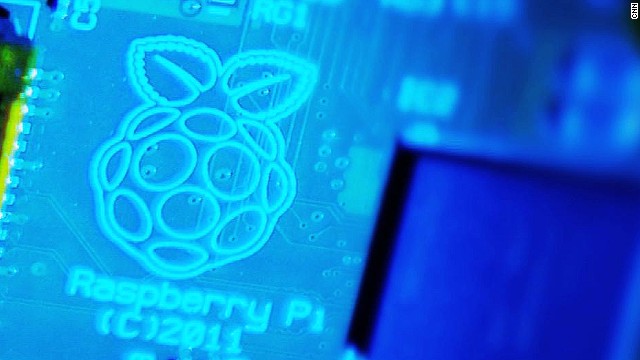Slices of Raspberry Pi: Hacking the world's chea
Described by its creator, University of Cambridge professor Eben Upton as "an attempt to try and reboot some of that 1980s computer industry feel,"
the technology has been embraced by creative hackers worldwide and put
to use in home weather stations to hot air balloon tracking and camera
systems.
"Too many people simply have no idea what goes on inside
(computers). Inventions like the Raspberry Pi really help to change that
Alyssa Dayan, co-inventor of AirPi home weather surveillance station
Alyssa Dayan, co-inventor of AirPi home weather surveillance station
The RPi has been shortlisted in London's Design Museum "Designs of the Year"
awards, with judges citing its affordability, power and accessibility
to children. As part of the exhibition accompanying the prizes, examples
of creative uses of RPi are on display at the museum until July 7.
They include a stylish,
personalized train departure board created by Gareth James of Hove, UK,
which provides the times of the next trains to Brighton.
"It's great to have a
dedicated piece of connected hardware that looks nice and sits and waits
to be useful," he said. "Whenever I'm thinking of leaving the house I
can easily check the next train time. Plus, it looks good on the wall...
No longer do I end up hanging around on the cold train platform."
Alyssa Dayan and Tom
Hartley created AirPi, an air quality and weather surveillance station
that uses RPi to take readings from an array of sensors, translating the
data into meaningful information and uploading it on to the internet.
The project cost only £55 on top of the cost of the RPi.
Dayan said the team had designed the device and set up a website
"not only to take our own air quality and weather readings but to
encourage and teach others to do the same -- and hopefully eventually
create a network of measurements coming in from across the world."
She said one of the key
benefits of RPi was the ease with which components could be added to the
board, which, combined with its cost, made it a great entry point to
introduce children to electronics.
"I think the
user-friendliness of computers has gotten to the extent that far too
many people simply have no idea what goes on inside them," she said.
"Inventions like the Raspberry Pi really help to change that."
A team from PA Consulting Group created a private cell phone network by connecting the RPi to a radio interface.
"We've shrunk a 30-foot
base station into a three-inch Raspberry Pi and created our own mobile
phone network," said PA's Frazer Bennett. "This proves what can be
achieved through low-cost off the shelf-systems."
In a more playful spirit, Tom Rees created a car out of Lego that is controlled using the console from a gaming system.
It is easier than ever to have your computer control your house,
move a robotic arm, turn a wheel, read the temperature, or speak your
weight. The sky is the limit
RPi enthusiast Tom Rees
RPi enthusiast Tom Rees
"It is easier than ever
(and less scary than ever) to have your computer control your house,
move a robotic arm, turn a wheel, read the temperature, or speak your
weight," he said. "The sky is the limit."
High-altitude ballooning
enthusiast David Akerman can attest to that. He's using RPi to track
and transmit photographs from his unmanned balloon flights, which have
ascended 40.5 kilometers (25.2 miles) into near space with a camera.
"The Pi has plenty of
memory and processor power, meaning that it can take several photographs
and then send the best image to transmit," he said.
"Balloon payloads swing
and rotate a lot and many of the images will be directly at the sun or
the black sky, and my software rejects all of those."
Akerman, whose RPi
invention isn't included in the design Museum exhibition, is tinkering
on improvements that will allow him to send better and larger images
from the flight, and is optimistic of besting his highest altitude on
the next flight. "I'm hoping to fly this in the next few weeks," he
said.
 The Raspberry Pi has been shortlisted for the London Design Museum's
The Raspberry Pi has been shortlisted for the London Design Museum's
No comments:
Post a Comment